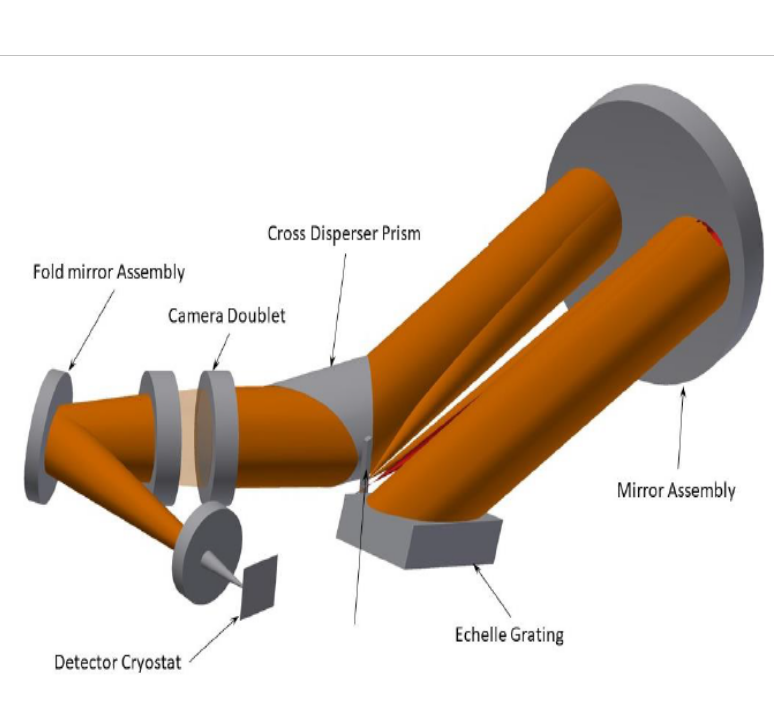High-resolution optical spectroscopy has become an essential tool in modern astrophysics, offering detailed insights into the chemical composition, physical conditions, kinematics, and evolutionary state of a wide range of cosmic sources. Over the past few decades, this field has experienced significant growth, yielding a vast array of high-quality data across various astronomical objects. In this context, a High-Resolution Spectrograph (HRS) is being developed for installation on one of the side ports of the 3.6-m Devasthal Optical Telescope (DOT). Designed with versatility in mind, the HRS will not be restricted to a narrow set of scientific objectives but will instead support a broad spectrum of research applications.
The instrument is bench mounted fibre-fed, high-resolution Echelle spectrograph offering two observational modes: a High Resolution mode with a spectral resolution of 80,000, and a High Efficiency mode with a resolution of 40,000. Covering a broad spectral range from 380 to 850 nm, the HRS is designed as a next-generation spectrograph, drawing on design principles and performance benchmarks comparable to other state-of-the-art instruments currently in use worldwide.
| Parameters | Value |
| Type | Spectroscopy |
| Wavelength range | 380 - 850 nm |
| Spectroscopy modes | High Resolution mode (HRM) and High Efficiency Mode (HEM) |
| Spectral resolution | HRM: 80,000, HEM: 40,000 |
| RV stability | < 2 m/s |
| Two Interleaved Spectra | Able to record simultaneously the spectra of an object and/or sky, and object and/or calibration |
